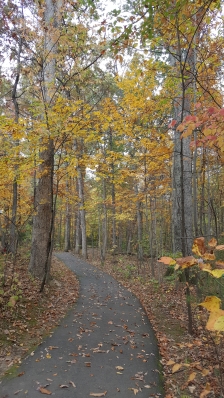 A recent weekend spent outside in a flurry of autumnal leaves got me thinking about fall books. Like pairing wine and cheese, what kinds of books pair best with fall?
A recent weekend spent outside in a flurry of autumnal leaves got me thinking about fall books. Like pairing wine and cheese, what kinds of books pair best with fall?
There is no right answer to this question, obviously. But for me, the fall season represents change. A sweep of crisp air clears out the oppressive heat but also takes with it the relaxed summer atmosphere. Breezes blush children’s cheeks red rather than the burn of the sun. Caught between a season many, particularly children, dream about all year and the barren winter other people (like me) dread, fall serves as a time of transition, carrying us from one extreme to the next.
In the fall, trees burn brightly with golds and reds as if setting fire to past before they wither and die at the aperture of winter. And, for a brief moment, the air churns with possibility.
My favorite poem that evokes this sense of inevitable change is probably Frost’s Nothing Gold Can Stay.
“Nature’s first green is gold,
Her hardest hue to hold.
Her early leaf’s a flower;
But only so an hour.
Then leaf subsides to leaf,
So Eden sank to grief,
So dawn goes down to day
Nothing gold can stay.”
The poem could speak of autumn or a sunset or any other of natures numerous transient states. Regardless, change will come. Death and eventual rebirth are inevitable and often good. We can’t stop it. But we can enjoy it while it’s beautiful.
Maya Angelou wrote another poem called, appropriately, Late October, which also embodies these fall metaphors.
“Only lovers
see the fall
a signal end to endings
a gruffish gesture alerting
those who will not be alarmed
that we begin to stop
in order to begin
again.”
Now deeply in the throes of fall, the inevitable transition into winter is not far away. However, it’s also not here yet. If you’ like to immerse yourself in some fall-appropriate books, here are some suggestions that evoke that sense of change and wonder.
The Outsiders by S. E. Hinton
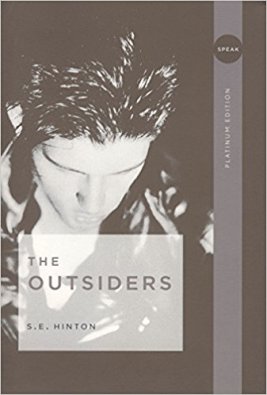
Not only is a coming-of-age novel the quintessential example of change, Robert Frost’s Nothing Gold Can Stay poem plays a prominent role in The Outsiders‘ story. Double points for that! The book follows teenage Ponyboy, a working-class “Greaser,” as he comes to the terms with the realities of the never-ending battle the upper-class “Socs.” The tragic tale beats with the heart of the transient nature of fall, no matter the actual season (or seasons) in which it takes place.
The Picture of Dorian Gray by Oscar Wilde
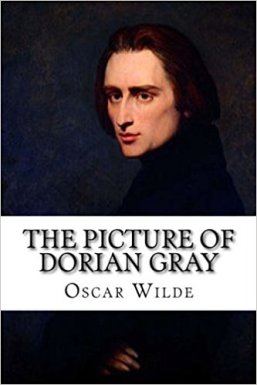
The brilliant shades of autumn hues are the result of decay. No one really thinks about that, do they? The death of leaves brings the world such beauty, for a time. Likewise, in The Picture of Dorian Gray, the main character clings to the branches of youthful beauty, while his portrait shows his rot, both physically and morally. Although, like the leaves, eventually he too will fall. As with the coming of winter, it is inevitable. This really does seem to be a tale of fall, in all its meanings.
The Remains of the Day by Kazuo Ishiguro
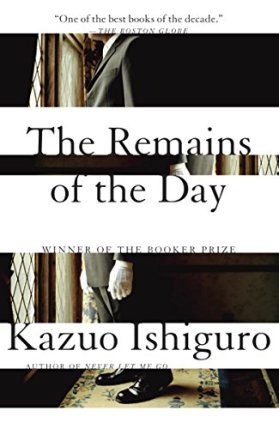
Although it’s been a long while since I’ve read The Remains of the Day and I’m not even sure the season in which it takes place, I always pictured the leisurely country drive in autumn, with the fallen leaves crunching beneath the wheels. This association might be because the idea of quiet reflection fits together well with fall. In summer, we unburden ourselves, toss away our blankets, our heavy clothes, and oftentimes our cares. In the fall, we begin to pile it all back on. We bundle up and maybe sit by the fire and think. Perhaps that is just the fall for me, but it feels appropriate for the season. And I’d be hard-pressed to find a better book about self-reflection than award-winning The Remains of the Day.
To Kill a Mockingbird by Harper Lee
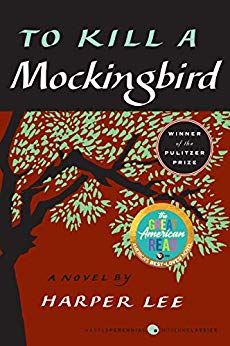
I don’t know if it’s because this book reminds me of school and fall also marks the start of school, historically, or that the climax takes place on Halloween, but I’ve always associated this book with fall. If you haven’t read the classic about young Scout and her heroic lawyer father who tries to set an innocent man free, a description that barely does this book justice, perhaps now is the time to read it. Or, if you haven’t read it in a while, maybe revisit a classic, emotionally moving and important tale. (I’m talking myself into re-reading it just by writing this!)
Fangirl by Rainbow Rowell
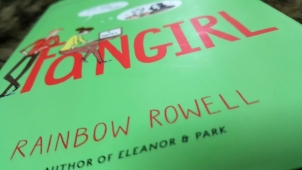
This might seem like an odd suggestion for a fall reading suggestion. But, like Mockingbird, this book makes me think of back-to-school, albeit here it’s college, and it also ties into the coming-of-age concept. Although the story of first-year college student and fanfiction writer, Cath, takes place over the course of the year, the book embodies change and growth, shedding who you were to learn who you are. Plus it’s a bit of a lighter read to offset some of the more serious toned books above.
The Cider House Rules by John Irving
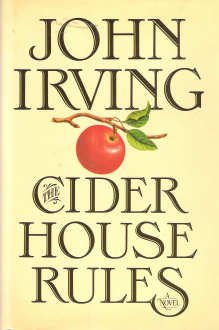
I’ve read a few of John Irving’s novels and whether or not they take place explicitly in fall, in my mind a cool wind always swoops and the autumn leaves are always churning around his characters. They were built in fall, whether they reside their full time or not. Fall seems like it is the only appropriate season for his novels. However, The Cider House Rules, in which part of the setting takes place in an apple orchard in Maine, feels decidedly fall in nature, teaming with contemplative and complex colors of love, loss and morality.
Let’s chat! What books do you think make good fall reads? (Perhaps a cozy mystery or a thriller!?)










November 5, 2018 at 2:34 pm
I’ve been craving mysteries lately. I am almost done with Faithful Place by Tana French, and will be starting The Unquiet Dead by Ausma Zehanet Khan. After that, I will delved into Nordic Noir with Snowblind by Icelandic author Ragnar Jonasson.
LikeLiked by 1 person
November 5, 2018 at 4:35 pm
Those sound really interesting. I’d really like to get into a good mystery. It’s not a genre I read often. Any suggestions?
LikeLike
November 5, 2018 at 4:48 pm
It depends on your tastes, I suppose. I really like Tana French’s Dublin Murder Squad series, which is set in modern Dublin. The Barker and Llewellyn series by Will Thomas is my favorite mystery series, and is set in Victorian London, and then Deanna Raybourn has her Veronica Speedwell books, which are also in London but deal with the upper classes and nobility, where Thomas’s stories are more about average Londoners. I try a lot of mystery series, but I don’t find many I really latch onto. But I keep looking, just in case!
LikeLiked by 1 person
November 5, 2018 at 5:00 pm
Thanks! I have a feeling I’d lean towards something written by a woman. will check one of these out next time I’m at the bookstore! I appreciate the suggestions!
LikeLiked by 1 person
November 5, 2018 at 5:01 pm
You’re welcome!
LikeLiked by 1 person
November 5, 2018 at 5:05 pm
You might give Yrsa Sigurdardottir’s books a try, too. She’s Icelandic, and her books are set there. I didn’t care for her character of Thora Gudmandsdottir, but the book itself was fine. It was the first of a series.
LikeLiked by 1 person
November 5, 2018 at 5:59 pm
Thank you!
LikeLiked by 1 person
November 6, 2018 at 6:19 pm
All great picks! Haven’t thought about Cider House Rules in ages but that’s a fall book if there ever was one!
LikeLiked by 1 person
November 7, 2018 at 10:34 am
ooh great list! Really agree with you about picture of dorian gray, remains of the day and to kill a mockingbird 😀 I really like the sound of the cider house rules as well 🙂
LikeLiked by 1 person
November 7, 2018 at 5:31 pm
🙂 I’m sure there are other great fall books, but those just kind of spring to mind when I think of fall!
LikeLike